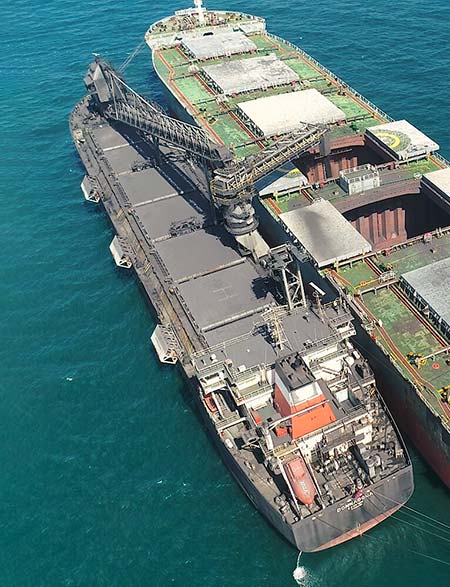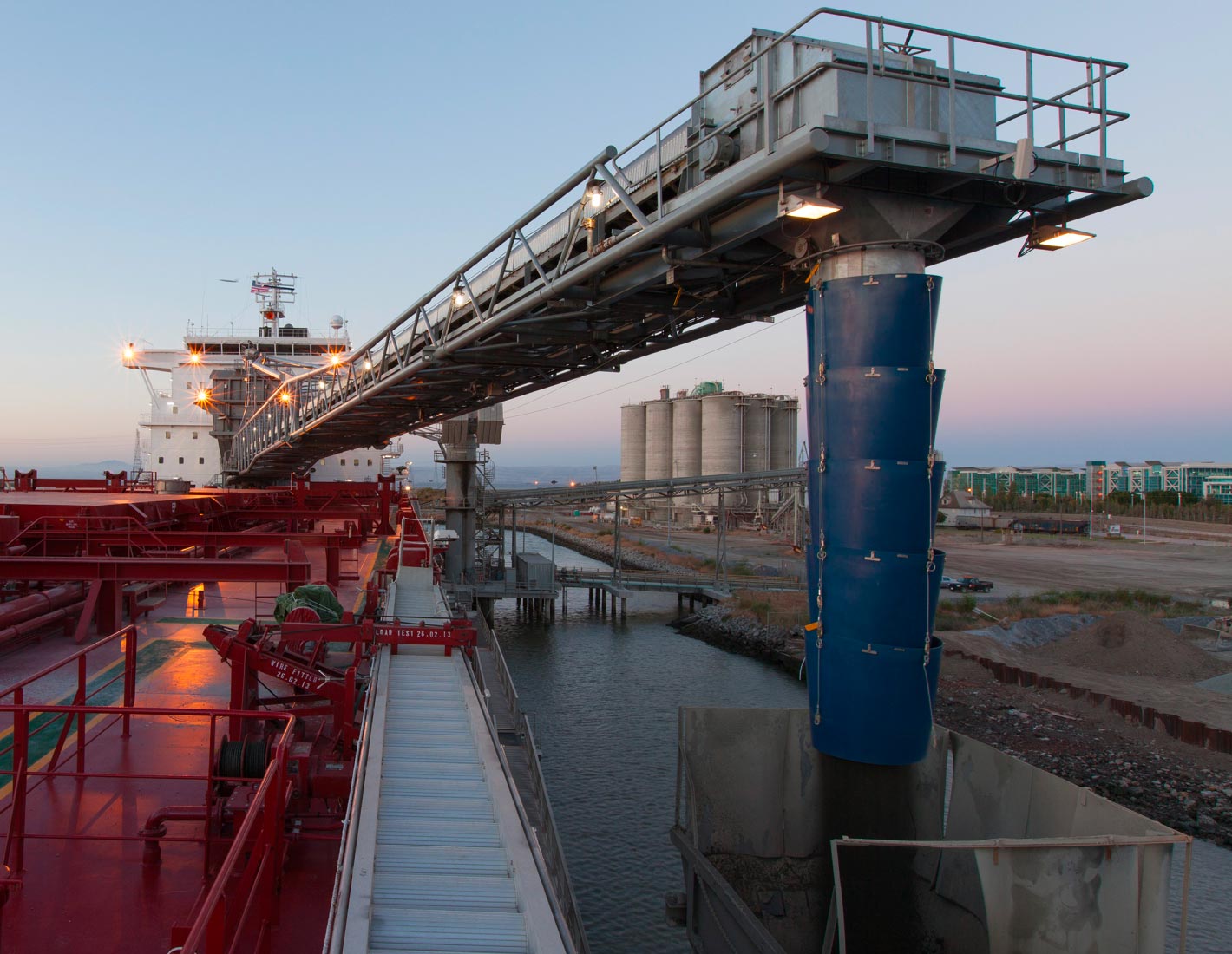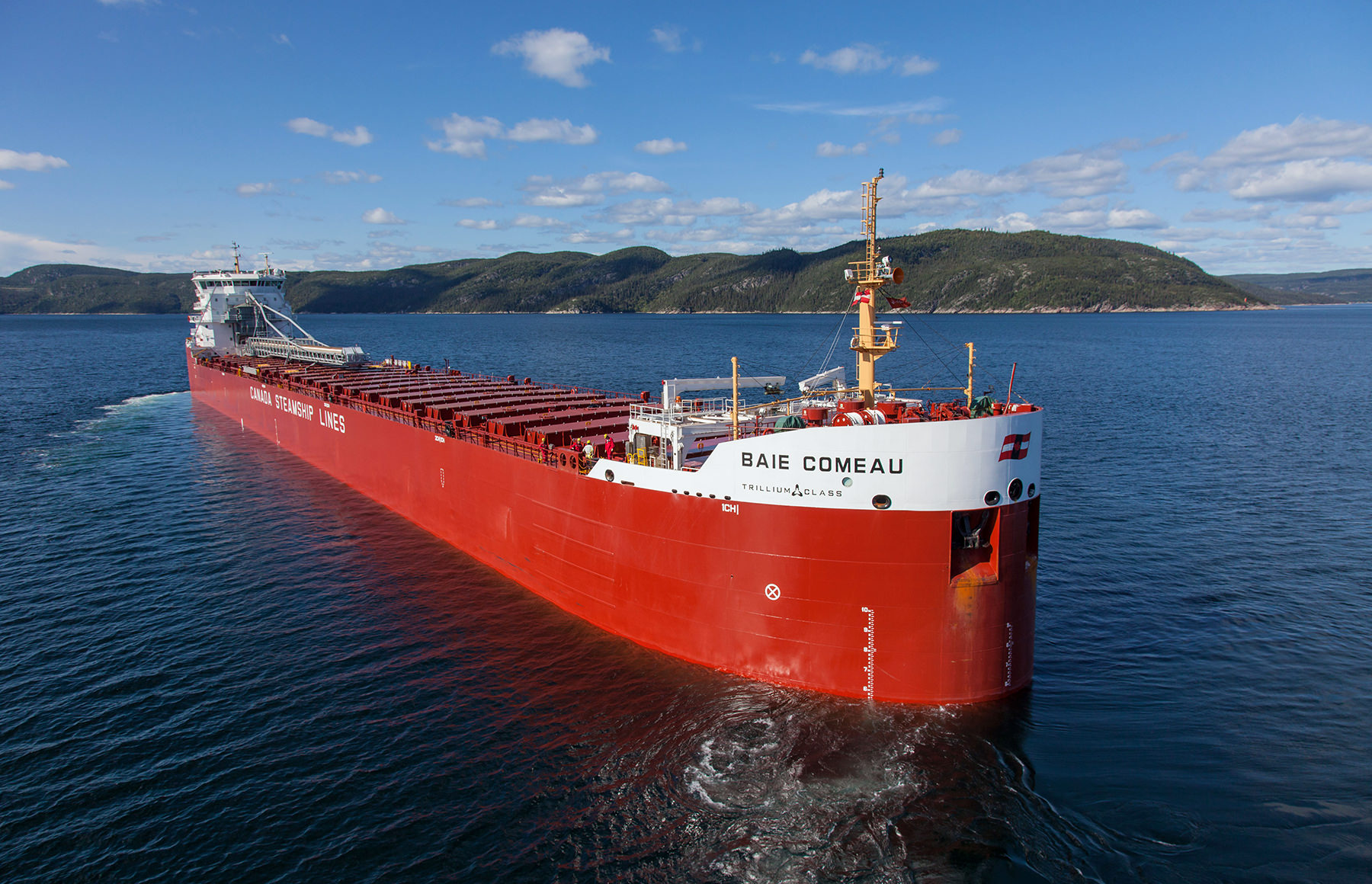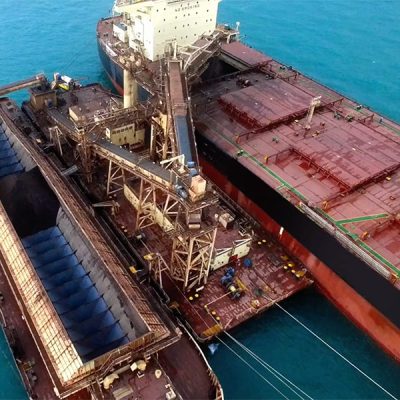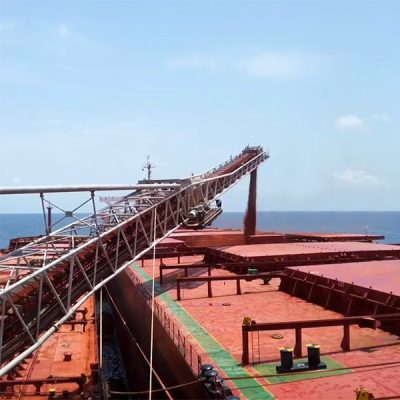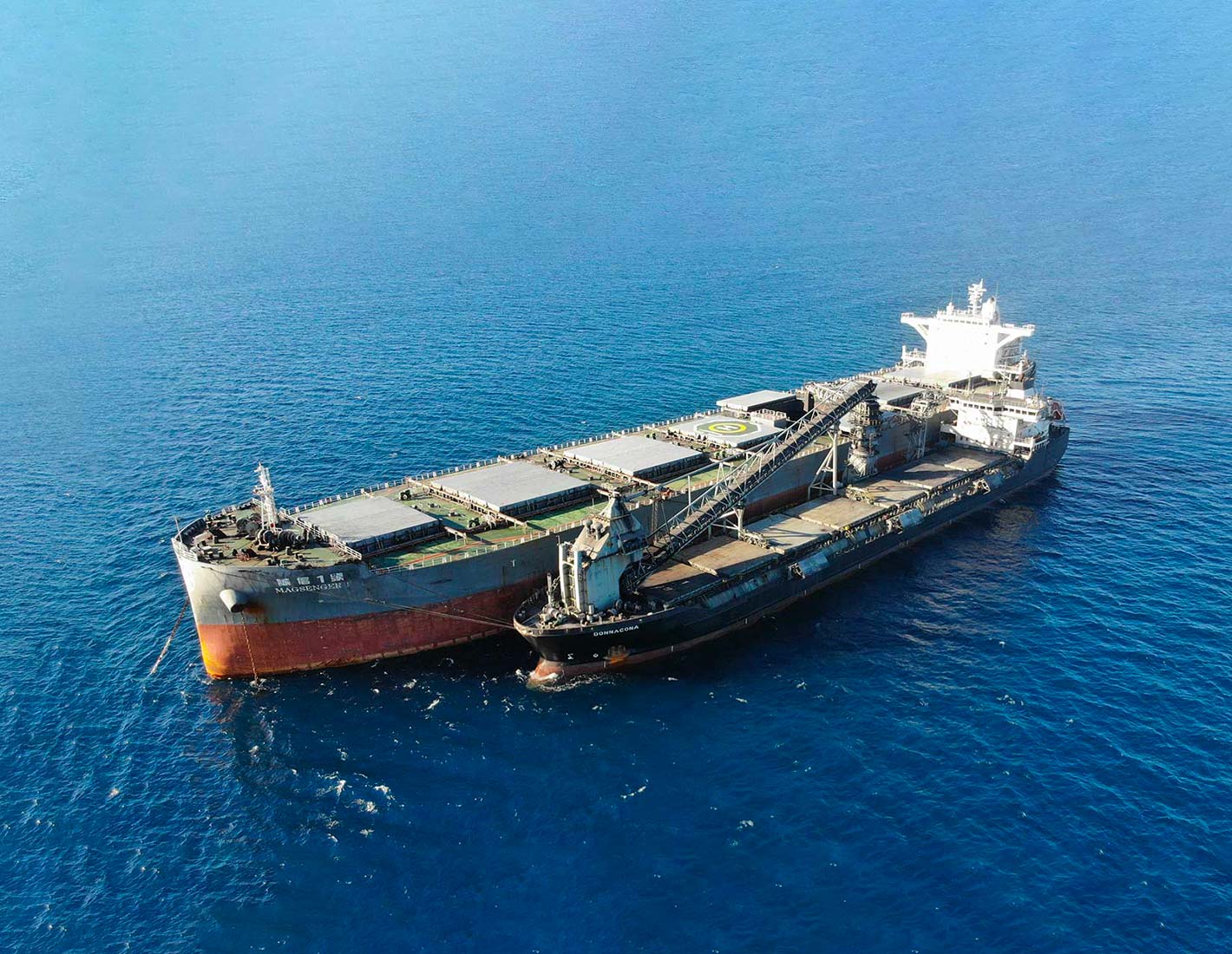Magnetite concentrate transhipment operation

Our services
Transhipment
Australia and Asia
Daniel Wilson
Vice-President, Commercial, CSL Australia
+61 02 9432 7510 Daniel.Wilson@cslships.com
Africa and Europe
Jakob Hansen
Senior Vice-President, Commercial and Transhipment
+44 77 7190 5901 Jakob.Hansen@cslships.com
CSL has an impressive track record of providing high capacity, reliable, cost effective and environmentally sound transhipment services to mining companies around the world.
Our customized transhipment systems are designed and built to meet and often surpass the highest technological, safety and environmental standards, even in the most challenging environments.
High Volume Transhipment, Anywhere and Anytime.
As raw materials become increasingly sourced from remote and environmentally sensitive locations without access to deep water ports, the need for reliable, safe, eco-responsible and efficient high-volume open-sea transhipment is on the rise. CSL’s bespoke transhipment solutions can meet this growing demand, providing customers with larger and highly maneuverable transhipment shuttle vessels (TSVs) that apply CSL’s proven gravity self-unloading technology to shallower vessels. Our TSVs offer faster cycle times and provide flexibility in transhipment operations, making them the ideal solution for offshore transhipment applications. Our recent success in executing complex transhipment projects demonstrates our operating capabilities and the inherent advantage of our gravity-based material handling technology.
Up to 10,000 Tonnes Per Hour
Bespoke cargo transfer systems handle rates between 5,000 to 10,000 MT per hour
Minimizes Environmental Impact
Optimized design minimizes environmental impact
High-Capacity and Cost-Effective
Bespoke designs provide high-capacity and cost-effective transhipment solutions
Advantages and Applications
